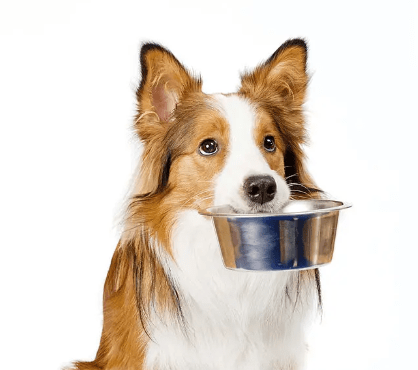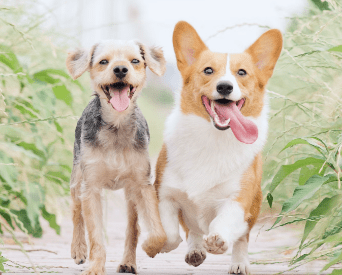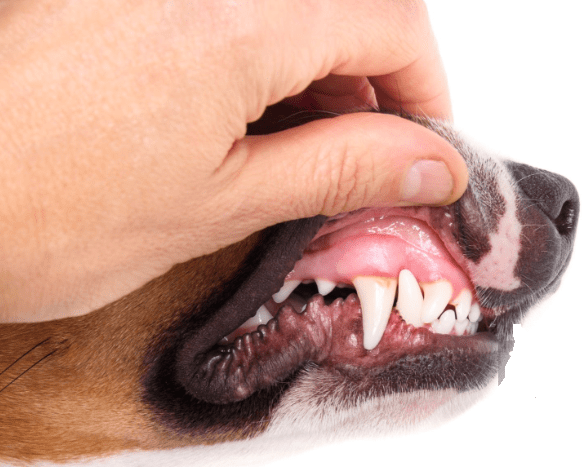Every part of a dog has a story, from their wagging tails to their curious noses.
But have you ever paused and pondered, “Why do dog’s lips have ridges”?
It’s not just a random feature; it’s evolutionary artistry at its best.
As someone with an extensive background in canine anatomy, I’ve always been intrigued by the nuanced intricacies of our furry companions.
This guide promises an answer to that question and a journey into understanding the marvel of the dog mouth anatomy.
Get ready to view your four-legged friend in a whole new light.
Table of Contents
Dog Mouth Anatomy: A Brief Overview
The mouth of our canine companions is a blend of complexity and precision. Within the confines of those furry cheeks lies a world driven by survival, communication, and an insatiable love for treats.
Getting acquainted with their oral structure is essential to truly grasp why dogs’ lips have ridges.
- Dog lips: Not just a barrier but an active part of their oral framework.
- Teeth: An array of incisors, canines, premolars, and molars tailored for various tasks.
- Tongue: Beyond tasting, it aids digestion and panting and offers cute licks.
Why Do Dog’s Lips Have Ridges?
The unique texture of dogs’ lips has been a topic of interest for many pet enthusiasts. Have you ever questioned why dogs’ lips have ridges? Let’s delve deeper.
Protection from Teeth
The ridges serve as a cushion, protecting their soft lips from sharp canine teeth and preventing self-inflicted injuries during activities like chewing.
Enhanced Grip for Holding Objects
Playing fetch or holding toys, these ridges enhance grip. They ensure that objects, whether playful toys or an occasional shoe, are held firmly.

Dental Hygiene and Cleaning
Think of these ridges as nature’s toothbrush. As the lips rub against teeth, they clear food remnants and decrease plaque, promoting better dental health.
Taste Sensation Improvement
Thanks to the ridges, dogs get an amplified taste sensation. The increased surface area allows them to relish the flavors better.
Facilitating Mouth Opening
These ridges also aid in easy mouth movement, like door hinges, allowing dogs to open their mouths wide for various activities.
Evolutionary Traits from Puppyhood
The ridges, believed to have evolved to aid puppies in nursing, ensure a tight seal around their mother’s teeth.
Cooling Mechanism for Body Temperature
Seen a dog panting? Those ridges help. By increasing evaporation surface area, they assist dogs in cooling down.
Communication and Social Interaction
A dog’s ridged lip movements convey messages, whether it’s signaling aggression or showcasing relaxation.
Sensory Perception: Smell and Taste
While noses are primary, lips, with their ridges, play a supporting role, enhancing sensory perception.
Anatomical Differences Among Breeds
Different breeds have varying ridge prominence, stemming from their specific evolutionary roles: hunting, guarding, or herding.
The Color and Texture of Dogs’ Lips
It’s fascinating to note the color and texture variations in dogs’ lips while venturing beyond ridges.
- Darker lips: Often seen in breeds with darker coats, providing added protection against UV rays.
- Spotted or pink lips: Common in dogs with lighter fur or mixed breeds, adding to their unique charm.
- Textured variations: While ridges are common, the depth and pattern might vary, offering breed-specific advantages.
The Significance of Ridges on Dogs’ Lips
These unique formations on the lips aren’t merely for show. They hold significant evolutionary, functional, and communicative importance.
How Ridges Change With Age
As humans develop wrinkles with age, the ridges on dogs’ lips can change. They might become more pronounced or, conversely, smoother. Regular observation can offer insights into your dog’s health and well-being.
How to Examine Your Dog’s Lips?
One often overlooked aspect of canine care is the regular examination of dog lips. Much can be gauged about a dog’s health from this simple check-up. Here’s how you can effectively and safely do it.
Step-by-Step Guide to a Basic Lip Check-up
To ensure you get a comprehensive view of your dog’s lip health, follow this detailed procedure:
- Gather Supplies: Equip yourself with a flashlight for better visibility, a clean cloth, and perhaps some treats for your furry friend.
- Choose a Calm Environment: Dogs can be skittish. Choose a quiet place, free from distractions.
- Secure Your Dog’s Head: Gently hold your dog’s head to keep it steady. This ensures you get all the details of their dog mouth anatomy.
- Examine the Upper Lip: Begin by gently lifting the upper lip. Look for any anomalies, paying attention to the ridges.
- Inspect the Lower Lip: Pull down the lower lip and inspect. Compare the upper and lower dog’s lips for any differences.
- Check for Symmetry: Just as in humans, dog symmetry is a sign of health. Ensure both sides mirror each other.
- Look for Discoloration: Color changes can be early signs of health issues. Keep an eye out for any unusual spots or changes in hue.
- Note Any Lumps or Bumps: Lumps could be benign or a sign of something more severe. It’s essential to document and monitor them.
- Check for Signs of Dryness or Cracking: Hydration is vital. Dry or cracked lips could indicate dehydration or other health concerns.
- Assess Gum-Lip Junction: This area can host a myriad of problems, from tartar build-up to potential gum diseases.
- Observe Inside of Lips: Often overlooked, the inner part of the lip can harbor hidden issues.
- Document Findings: Keeping a record can help track changes over time and can benefit veterinary consultations.
- Consult a Veterinarian for Anomalies: It’s always best to consult a professional if you find anything unusual. Your observations, combined with their expertise, can ensure your dog’s health.
- Regular Monitoring: This shouldn’t be a one-time activity. Make it a routine to examine your dog’s lips, ensuring they remain healthy.
- Review Previous Check-up Records: It’s prudent to review past check-up records after your examination. This allows you to spot patterns, recurring issues, or changes over time.
Unusual Findings on Dog Lips: When to Be Concerned
Closely examining dog lips can sometimes reveal concerns worth a veterinarian’s attention.
Lip Fold Dermatitis
Seen in breeds with droopy lips, it’s an inflammation caused by trapped moisture or debris.
Oral Papillomas
Wart-like growths on the lips are generally benign but should be monitored.
Chapped Lips
Harsh conditions can lead to dry, chapped dog lips. A pet-safe moisturizer can help.
Discoloration of Lips
Changes in lip color, either black to pink or vice versa, may indicate health issues.
Lip Infections
Redness, swelling, or discharge can signify bacterial or fungal infections.
Canker Sores and Ulcers
Painful sores on the lips might arise from trauma or autoimmune diseases.
Lip Lacerations and Wounds
Active dogs can sustain cuts; deep wounds necessitate vet attention.
Swollen Lips
Caused by allergies, bites, or infections. Persistent swelling requires a vet visit.
Lip Tumors
Lumps or bumps could be benign or malignant; any growth should be checked.
Autoimmune Disorders
Symptoms on lips can hint at autoimmune disorders, warranting a closer look.
Canine Lip Language: Do Dogs Smile or Kiss?
Beyond their functional roles, dog lips serve as a canvas of emotion. Ever noticed your canine grinning? That’s often a sign of contentment or pleasure. But don’t mistake every tooth show for a smile; context is crucial.

And those affectionate licks? They’re the doggy version of a peck or a smooch, serving as gestures of bonding and love. So yes, in their way, dogs smile and kiss.
Veterinary Insight: What Professionals Say About Lip Ridges?
Experts have delved deep into the nuances of dog mouth anatomy:
- Evolutionary Role: Ridges evolved for specific purposes.
- Protection: They act as barriers against dirt and debris.
- Functionality: Assisting in gripping objects and more.
- Insight: Not just random patterns; these ridges serve multiple crucial roles.
Conclusion
From understanding the intricate intricacies of dog mouth anatomy to deciphering their lip language, the ridges on our furry friends’ lips hold secrets beyond mere aesthetics. Being informed as guardians of these loving canines allows us to connect better, care for, and cherish every moment with them.
FAQs
What are the ridges on a dog’s lips?
The ridges on a dog’s lips serve multiple functional and evolutionary purposes, including protection and enhanced grip.
What should dogs’ lips look like?
Dogs’ lips should be smooth with a consistent color, free from cracks, sores, or abnormal lumps.
Why are dog lips black?
Dog lips are black due to melanin, which protects against sunburn and damage.
Can dog allergies cause swollen lips?
Yes, allergies can lead to swelling of a dog’s lips because of inflammatory reactions.
What are the lips of a dog called?
The lips of a dog are referred to as the “labia.”
Alina Hartley is a small-town girl with a ginormous love of bearded dragons. It all started with Winchester, a baby bearded who was abandoned at the shelter by his former owners because of a birth defect that caused one front leg to be shorter than the other. Alina originally went to the shelter looking for a guinea pig, but one look at Winchester and it was love at first sight. From that day on, Alina has dedicated her life to learning everything she can about bearded dragons. She loves helping new beardie parents start their incredible journey with these magnificent reptiles.
Follow her on:
LINKEDIN
TWITTER.
Read her latest articles HERE
Learn more about her HERE.

